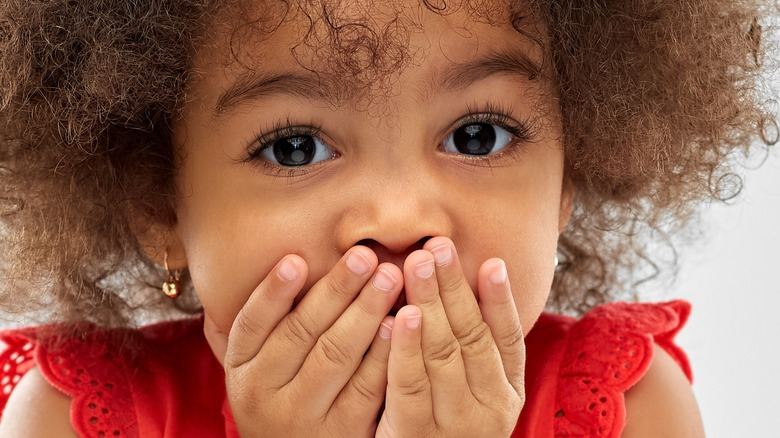Behind The Good-Luck Ritual Where Babies Are Thrown Off A Roof In Some Parts Of India
It's hard to express just how much a newborn baby will change your life. To give new parents the best chance at success, and to provide children a strong start in life, good luck rituals relating to childbirth have evolved all over the world. In Turkey, for example, the hairline of a newborn baby and even its eyebrows are sometimes covered in flour to help foster a longer lifespan, as The Bump explains. And in some parts of India, young children are thrown off the roof of a temple in a good-luck ritual that is now considered quite controversial.
The roof-tossing practice in some parts of India is not for newborns, but instead for toddlers, sometimes as old as 2, according to the Daily Mail. Common among Hindu and Muslim populations, particularly in the Indian states of Maharashtra and Karnataka, the roof-tossing ritual dates back centuries. According to custom, successful completion of the fall is not just a good sign for the child, but a harbinger of good luck and prosperity for the family. Despite best intentions, throwing a baby from a roof is risky, and in 2009, an Indian governmental agency intervened.
The babies are caught in a bed sheet
According to The New York Times, the baby-tossing practice in some Indian states is said to have begun hundreds of years ago, during times of high infant mortality. As the story goes, a saint advised parents of ailing children to construct a shrine from which the baby would be thrown. For this gesture of faith, a sheet would appear in midair to catch the child as it fell. Over time, the tradition evolved as expectant parents promised the baby toss in their prayers in return for the birth of a healthy child.
Needless to say, bedsheets don't really appear out of nowhere to catch children as they fall from distances of some 30 feet, but instead, communities gather to hold a bedsheet below in which the child is caught and then quickly returned to the parents. What's also notable, is that it's not the parents themselves who do the tossing but instead, adherents of the shrine where the ceremony takes place. As one can imagine, children as young as 2 have little use for tradition, and are reportedly upset by the experience, known to cry and scream their disapproval all throughout the process, as the Times goes on to note.
The practice is now officially banned
As the Daily Mail also mentions, in 2009, the National Commission for Protection of Child's Rights, a governmental agency in India, investigated the ancient baby-toss ritual and as a result, banned the practice. Since around that same time no official reports of baby-roof-tossing have been received, though the tradition is said to continue in remote areas like Mangasuli in Northern Karnataka, India. According to The New York Times, eyewitness accounts from as recently as 2016 say the tradition endures, but on a much smaller scale.
Also in 2016, media adviser at the National Commission for Protection of Child Rights said (via The New York Times), "We do not support this superstitious practice ... It is against the interest of the children. They may be really scared, and nobody knows how it affects their psyche." According to the Indian Mirror, no child injuries have been reported in the long history of the good-luck ritual, and devotees claim it's in the child's best interest (via The New York Times).


